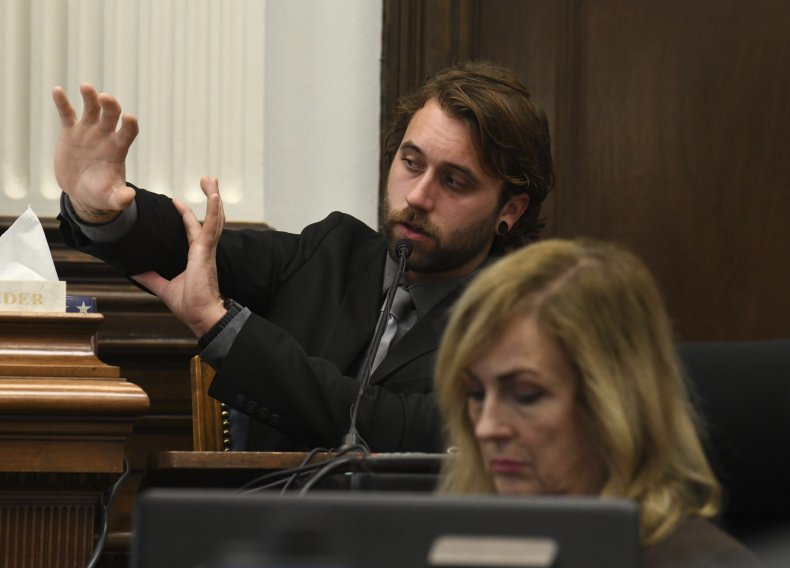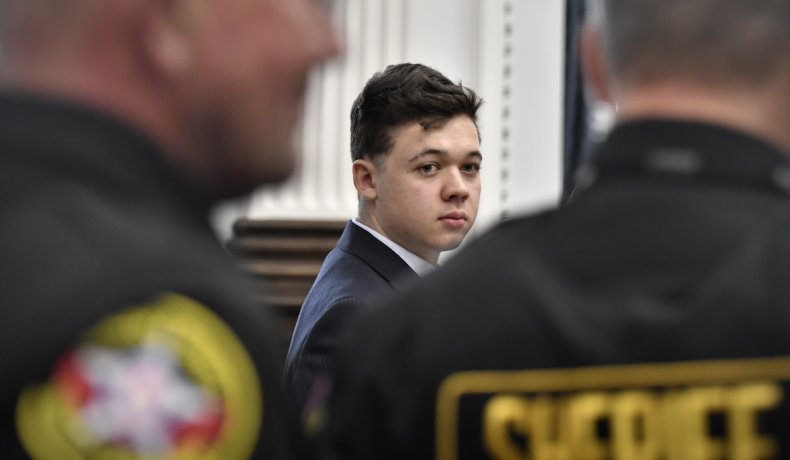Man Wounded by Kyle Rittenhouse Testifies He Thought Teen Was Active Shooter
Gaige Grosskreutz, the 27-year-old man wounded by Kyle Rittenhouse during a 2020 Black Lives Matter protest, took the stand in Rittenhouse's murder trial Monday to say he thought Rittenhouse was an active shooter.
Grosskreutz served as a volunteer medic during the protests in Kenosha, Wisconsin, and was nearby the night then-17-year-old Rittenhouse fatally shot Joseph Rosenbaum and Anthony Huber.
He told the court he drew his own weapon after seeing Rittenhouse fatally shoot Huber, the Associated Press reported. Grosskreutz said he approached the teenager with his arms raised and had no intention of shooting him.
"That's not the kind of person that I am. That's not why I was out there. It's not who I am. And definitely not somebody I would want to become," he said according to the AP.
Grosskreutz also testified he thought he was going to die that night. Rittenhouse defense attorney Corey Chirafisi later asked if his client only shot at Grosskreutz once he pointed a gun at Rittenhouse. Grosskreutz said that was correct, but that he never intended to point his pistol at the teenager.
The defense also presented a photo showing Grosskreutz pointing the gun at Rittenhouse, who was on the ground with his rifle pointed up at Grosskreutz.
Prosecutors are arguing in the trial that Rittenhouse was the instigator of all the violence from the night, meanwhile then teenager's lawyers are saying he only acted in self-defense due to threats to his life.
For more reporting from the Associated Press, see below.

The night of the shootings, Grosskreutz said he had gone to the protest wearing a hat that said "paramedic" and carrying medical supplies, in addition to a loaded pistol.
Grosskreutz said his permit to carry a concealed weapon had expired and he did not have a valid permit that night.
"I believe in the Second Amendment. I'm for people's right to carry and bear arms," he said, explaining why he was armed. "And that night was no different than any other day. It's keys, phone, wallet, gun."
On cross-examination, Chirafisi sought to portray Grosskreutz as dishonest in his description of the moments right before he was shot, with Chirafisi asserting that Grosskreutz was chasing Rittenhouse with his gun out.
Grosskreutz denied he was chasing Rittenhouse and said that he was concerned about Rittenhouse's safety after seeing others chase him and someone try to kick him.
Chirafisi also pointed to Grosskreutz's lawsuit against the city of Kenosha, in which he alleges police enabled the violence by allowing an armed militia to have the run of the streets during the demonstration.
"If Mr. Rittenhouse is convicted, your chance of getting 10 million bucks is better, right?" Chirafisi said.
At the defense table, Rittenhouse kept his eyes on Grosskreutz as he testified, taking detailed notes when the witness spoke about the moment he was shot.
One juror nodded her head in agreement when the judge instructed the jury to disregard Grosskreutz's referring to Rittenhouse's fatal shooting of another protester as a "murder."
Grosskreutz, who was trained as a paramedic, testified that he volunteered as a medic at protests in Milwaukee in the days after George Floyd died under the knee of a Minneapolis police officer in May 2020. Grosskreutz said he attended around 75 protests before the night he was shot, offering help to anyone needing medical attention.
He said he provided medical assistance to about 10 other people that night in Kenosha.
Rittenhouse is white, as are the three men he shot, but the case has stirred furious debate about racial justice, policing, vigilantism and the right to bear arms.
In the first week of Rittenhouse's trial, witnesses testified that the first man shot and killed, Joseph Rosenbaum, 36, was "hyperaggressive" and "acting belligerently" that night and threatened to kill Rittenhouse at one point.
One witness said Rosenbaum was gunned down after he chased Rittenhouse and lunged for the young man's rifle.
Rosenbaum's killing set in motion the bloodshed that followed moments later: Rittenhouse shot and killed Huber, a 26-year-old protester seen on bystander video hitting Rittenhouse with a skateboard. Rittenhouse then wounded Grosskreutz.
Rittenhouse could get life in prison if convicted.
Grosskreutz has a tattoo on the arm where he was shot. It is the common medical image of a snake wrapped around a staff, and at the top it has a banner that says, "Do no harm" and at the bottom, a banner reading "Do know harm."
When the prosecutor played graphic video of Grosskreutz's badly wounded arm, a few jurors seemed to grimace and look away from monitors in the courtroom.
Grosskreutz testified that he has difficulty lifting heavy objects with his right arm and has a loss of feeling extending from his bicep to his thumb.


